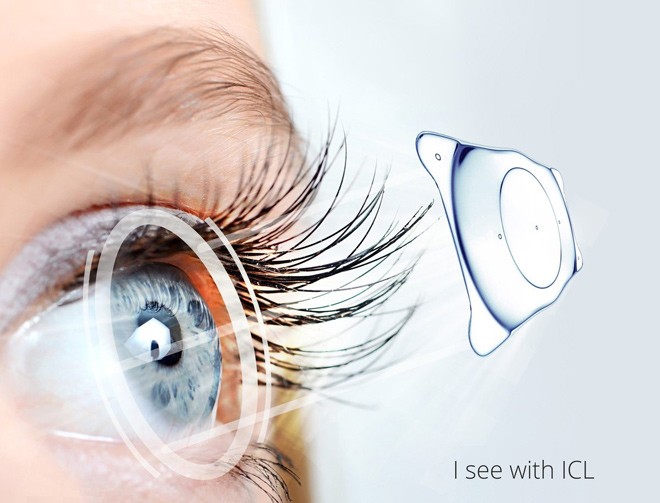LASIK AND PHAKIC: WHICH ONE IS SUITABLE FOR ME?
In refractive treatment, Laser vision correction surgery, include LASIK and ReLEx SMILE, is familiar with most people, has been performed by many surgeons all around the world, there is no doubt that LVC appeals to be trust-worthy for many patients. On the other hand, Phakic is the new ace, with a prominent medical breakthrough, correct refraction in a whole new way. Phakic is attractive to patients who want to benefit from the latest technology. If you’re considering refractive surgery, you may find it difficult to choose between Lasik and Phakic. In this article, let’s go through all the points, from treatment mechanism of 2 methods, to advantages and disadvantages , when-to-use note to give you a brief idea of which method is right for you.
LASIK and ReLEx SMILE are surgical treatments that use a laser to corrects vision by altering the curvature of the cornea, making it possible for people with nearsightedness to see with the naked eye. In Phakic, an intraocular lens is implanted into the eye at the position of behind the iris and in front of the natural lens to correct vision without taking out the natural lens or altering the corneal structure.
Although LVC and Phakic have the same purpose, is to help patients see with their naked eyes without the dependence of glasses or contact lenses, each method has it own characteristics.
1. Who should perform?
Both LVC and Phakic are for patients who are not comfortable with wearing glasses or using contact lenses and want to find a way to correct his or her vision. In many cases, the patients live in circumstances that don’t allow them to wear glasses like having a job as flight attendants, pilots, performers, or military work.
Also, both of 2 methods require no abnormality in corneal structure (pyramidal cornea), no sign of inflammatory eye diseases such as conjunctivitis, keratitis, endophthalmitis, uveitis, etc, no diseases of the ocular fundus (retina), cataract, glaucoma.
While LVC requires suitable corneal thickness, Phakic requires suitable width and partial depth in front of the eyeball to place the intraocular lens.
2. Advantages and disadvantage
a. LVC
Advantage:
- Safe, accurate, refractive treatment up to 7 diodes.
- Lasik technology is well known, millions of people have undergone this surgery worldwide.
- Quick recovery, can return to work and study 24 hours after surgery.
- Stable outputs, reasonable costs.
- Laser technology is increasingly improved, from SBK Lasik to Relex SMILE to minimize corneal invasion, reduce complications, bring healthier eyes, better visual quality after surgery.
- There are 3 methods of Lasik, a variety of choices, easy to meet the needs of the patient.
Disadvantage
- Thinning the cornea, creating irreversible changes in the natural structure of the eye.
- Limiting treatment range (7 diodes or less).
b. Phakic
Advantage
- Wide range of prescription, up to 18 diodes of myopia, 10 diodes of hyperopia and 6 diodes of astigmatism. Many patients don’t meet the requirements for Lasik candidacy because their prescription is too high or they have thin corneas. ICLs provide them a safe and effective treatment.
- Phakic ICL does not remove corneal tissue, preserve the cornea structure completely. In the event of a major prescription change or the availability of new vision correction options, ICL is completely removable, assisting patients, together with their doctor, to make changes to keep pace with technology and their changing needs.
- There are no unpleasant phenomena after surgery such as entanglement or dry eyes.
- The lens is made of Collamer, the material is highly compatible with the human body, has built-in UV protection, slowing down the cataract process in old age.

Disadvantage
- High cost.
- In the world, due to the complicated surgical procedure, the number of surgeons who perform Phakic surgery is much less than the number of surgeons who perform LVC surgery, which can be a entangle for patients who want to perform Phakic in foreign countries.
The above information is for reference only. To know exactly which method is suitable for your eyes, you should visit your trusted ophthalmologist to have an eye examination and your doctor will consult and help you to decide based on your examination result. This article’s purpose is to give you general knowledge about Laser vison correction and Phakic surgery, so you will have a better point of view in the refractive surgery methods. Since our eyes play an irreplaceable role our every single activity, no matter it is working, learning, or entertaining, we advise you to take refractive surgery seriously and consider all the factors before coming to a conclusion.
